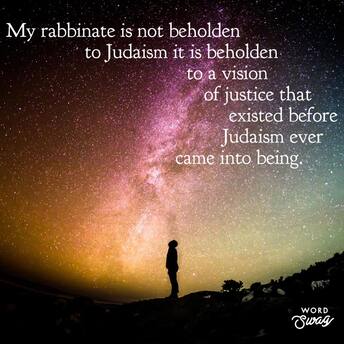|
I am a Rabbi and I drank Gin on the second day of Passover without checking whether it was chametz* and when finding out it was I didn't really care, while those around me were outraged. This year as COVID-19 has ravaged the world it was hard for me to focus in on the minutiae of Jewish law. While arguing with too many friends, colleagues and relatives about what it really means to social distance, virtually nursing others through illness, and worrying over my own health I was not in any mood to focus on beautifying my seder table or koshering my pots. But it was not the same for those around me. I watched as people continued to buy fancy dishes and check their rice, argued about whether after being in quarantine for two weeks they could visit their family and wonder whether they had to pay their housekeepers their full salaries if they were not cleaning their houses. The purpose of a seder is to remind us of what was. And although I am blessed with many privileges that my biblical ancestors were not; for me in this moment we are actually living through the narrowness that is alluded to in the Hebrew word for Egypt, Mitzrayim. This is not a HOLIDAY this is Mitzrayim, we are back where we began. And just like the Slonimer Rebbe teaches about the Israelites in Egypt, today, we are living in the belly of the beast and we are not aware of our own enslavement. Enslavement to the capitalist, patriarchal, racist overlords that are running the show and pitting oppressed groups against each other. We have been in the belly of the beast as we continue shopping from Amazon and ignoring #BlackLivesMatter and the #MeToo movement. We are in the belly of the beast when white skinned Jews stand shocked and cry over mass shootings in synagogues, not recognizing that our black and brown brothers and sisters have been in more danger than our passing white skin. We are in the belly of the beast when we think we can ignore the planets cries and continue as is. We are in the belly of the beast when COVID strikes and we continue going to synogague. We are in the belly of the beast when we think things will go back to how they were. We are in the belly of the beast when we care more that I ate chametz on Pesach than seeing the true pain and suffering that is built into the oppressive systems that we choose to uphold for our personal gain. If we believe we are celebrating a holiday called Passover and think God is looking down upon us with joy, we are wrong. We need to stop reenacting the oppression of the past and start dealing with oppression in the present. Stop speaking distorted versions of "torah" and start speaking truth. Reality does not care for fancy seder plates. God is crying, has been for a while now * chametz- a grain based food forbidden on passover
0 Comments
 I have heard people criticize the miniseries Unorthodox for an unrealistic portrayel of the Satmar community while maintaining that Esty's return to Germany seems implausible.* And while that might be true I want to look at the story through a different perspective without arguing fact or fiction. I want to look at it through the lens of communal Holocaust trauma and healing. Throughout the series, we are reminded that the community holds a deeply ingrained reponse to the Holocaust. The message I hear repeated throughout is that they feel a deep responsibility to repopulate the world for the 6 million who were lost. I am struck by the communal trauma response, and the juxtaposition of Esty’s return to the original location of the harm. Since the Holocaust Jews have worked hard to remember the harm. Some have built lives based around it, in hopes that it would protect them from future harm. This is a normal trauma response- We try to control the world so we cannot be harmed again. But the series does a good job showing us that the protection we try to create for ourselves often comes with a high cost. But Esty's journey back to the source of communal harm, back to Germany to the place where it all started may seem implausible but may actually be the perfect place for her to return. Oftentimes the victims of harm become perpetrators of new harm in an attempt to protect themselves. As the Nazis are the perpetrators of the Satmar community, the Satmar community becomes the perpetrators of Esty's harm. Her return to Germany, her ability to return to the place where the Nazis decided on the extermination of the Jews becomes the place where she not only releases herself from the bondage of the community but also allows her to begin to release the PTSD from the original trauma. When Esty removes her wig she signifies the end of her communities attempt to control life in the vain attempt at protection. Her search for self and her reclaiming of a life beyond the walls of protection is when the true healing happens and it is in this moment that the Nazi's truly lose their power. And for me this symbolizes the end of the effects of intergenerational transmission of Holocaust trauma in the place where it all began. |
Rabbi Esther AzarArchives
May 2020
Categories
All
|


 RSS Feed
RSS Feed
